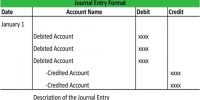In a merchandising company, inventory consists of many different items. These items have two common characteristics: (1) they are owned by the company and (2) they are in a form ready for sale to customers. Only one inventory classification, merchandise inventory, is needed to describe the many different items that make up the total inventory.
- In a manufacturing company, inventory is usually classified into three categories: Finished goods, Work in process, and Raw materials. Raw materials inventory-the basic goods that will be used in production but have not yet been placed into production. Work in process—that portion of manufactured inventory that has been placed into the production process but is not yet complete. Finished goods inventory—items that are completed and ready for sale.
- By observing the levels and changes in the levels of these three inventory types, financial statement users can gain insight into management’s production plans.
- No matter whether they are using a periodic or perpetual inventory system, all companies need to determine inventory quantities at the end of the accounting period.
- If using a perpetual system, companies take a physical inventory at year-end for two purposes: (1) to check the accuracy of their perpetual inventory records and (2) to determine the amount of inventory lost due to wasted raw materials, shoplifting or employee theft.
- Companies using a period inventory system must take a physical inventory for two different purposes: (1) to determine the inventory on hand at the balance sheet date and (2) to determine the cost of goods sold for the period.
- Determining inventory quantities involves two steps: (1) taking the physical inventory of goods on hand and (2) determining the ownership of goods.
- Taking a physical inventory involves actually counting, weighing, or measuring each kind of inventory on hand.
- To determine ownership of goods, two questions must be answered: Do all of the goods included in the count belong to the company? Does the company own any goods that were not included in the count?
- To arrive at an accurate count, ownership of goods in transit (on board a truck, train, ship, or plane) must be determined. Goods in transit should be included in the inventory of the company that has legal title to the goods. Legal title is determined by the terms of the sale.
- When the terms are FOB (free on board) shipping point, ownership of the goods passes to the buyer when the public carrier accepts the goods from the seller.
- When the terms are FOB destination, ownership of the goods remains with the seller until the goods reach the buyer.
- In some lines of business, it is customary to hold the goods of other parties ‘and try to sell the goods for them for a fee, but without taking ownership of the goods. These are called consigned goods.















